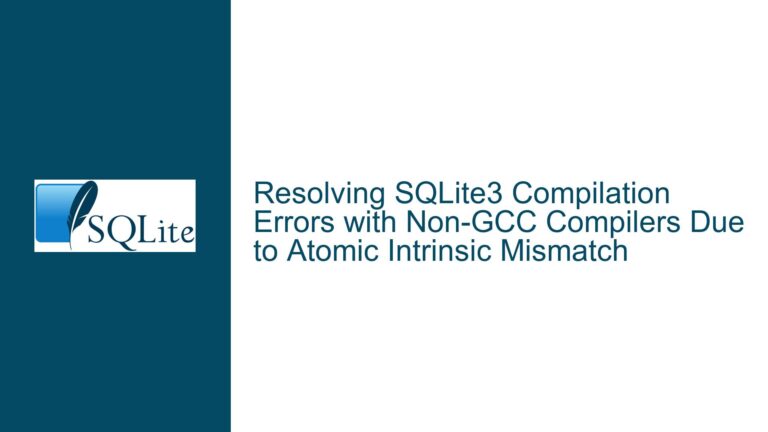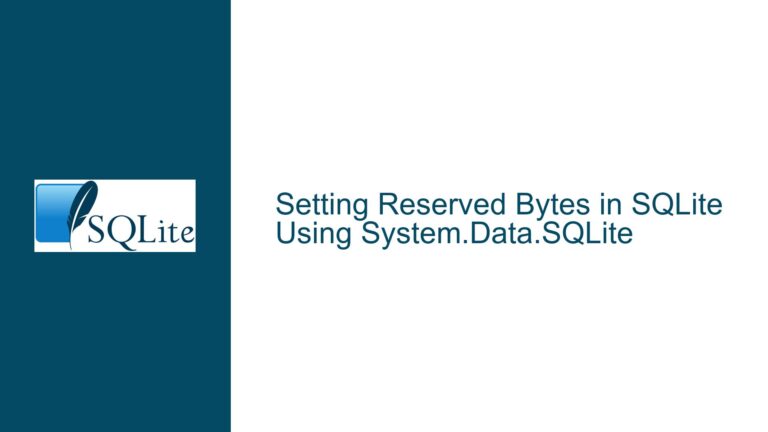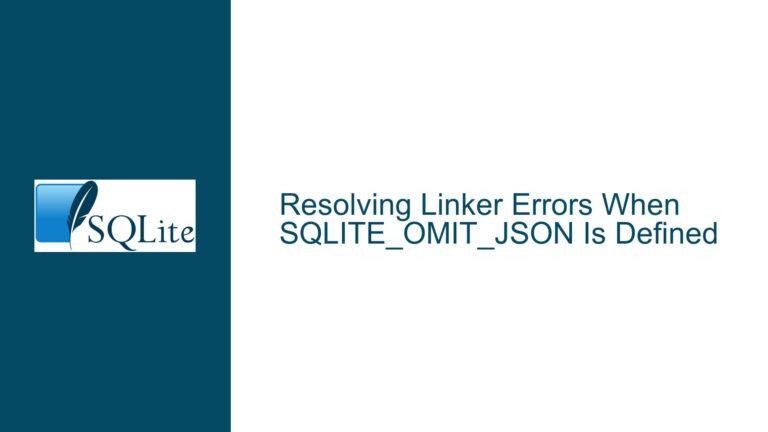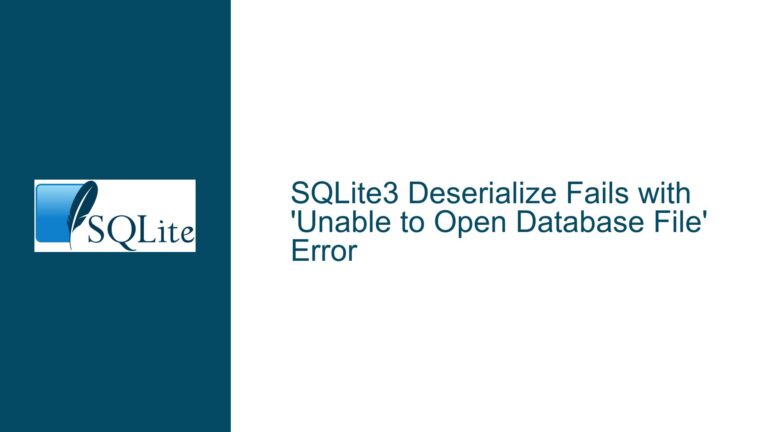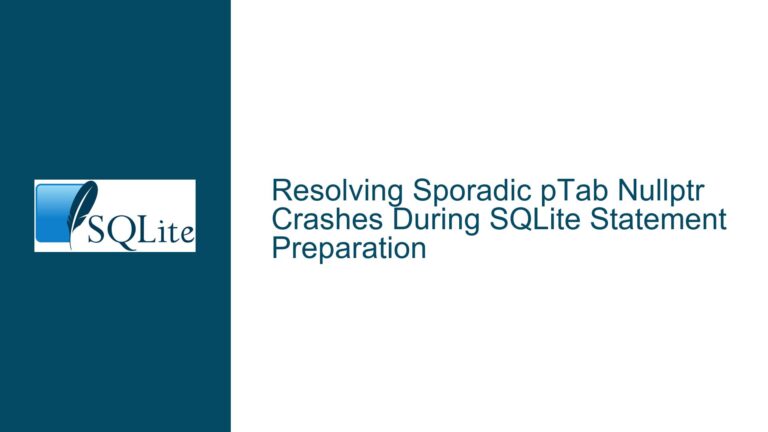SQLite JSON Functions and Property Order Preservation
Understanding JSON Property Order in SQLite The issue of whether SQLite’s JSON functions preserve the order of properties within JSON objects is a nuanced topic that touches on both the technical implementation of SQLite and the broader specifications of JSON itself. JSON, or JavaScript Object Notation, is a lightweight data interchange format that is easy…


